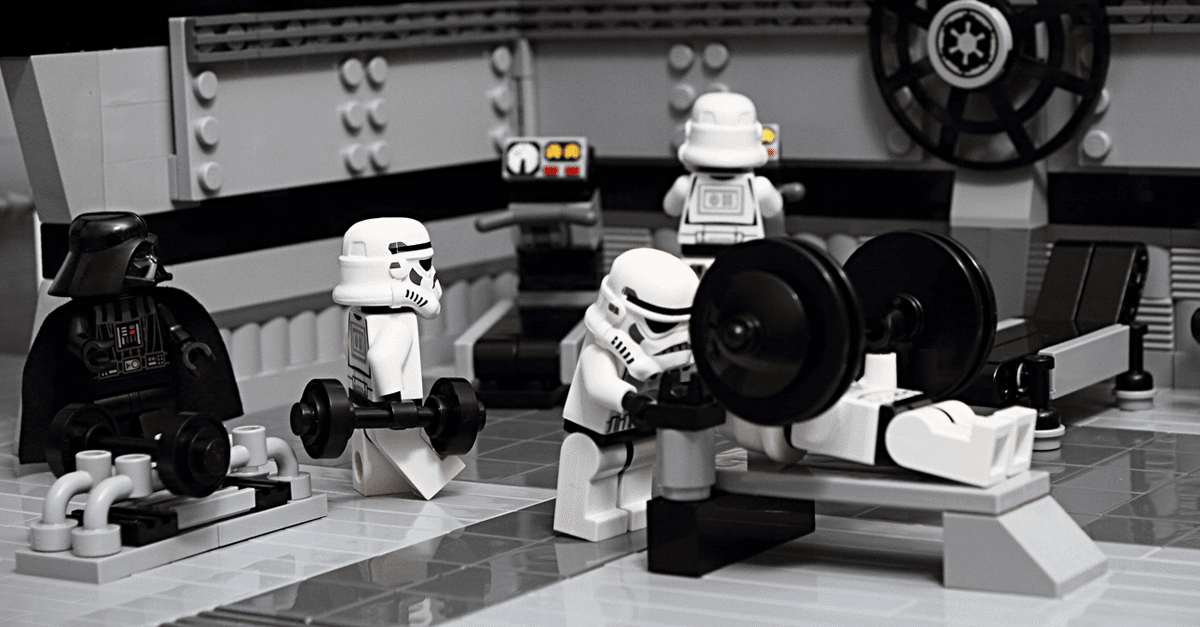When I tell people I work as a personal trainer in a big box gym, the first thing they ask is, "So when are you going to open your own place?"
For now, the answer is "never." Or at least not in the foreseeable future. In all honesty, it's a pretty good gig.
I've created a career path for trainers looking to work with post-rehab clients, developed an assessment process for new members, become a coordinator with medical professionals for referrals for our clubs, and was the driving force behind having more than one lonely foam roller in each location. (I'm proud to say my own location has more than 15, and they're used all day long. Sometimes people have to wait for them.)
I've taught more than 100 continuing education courses for trainers, led more than 30 certification courses, and mentored trainers.
I'm going to share with you the meat-and-potatoes methods I've used to carve out a successful career within my company, and show how you can do the same.
#1: Do one thing extremely well, and be great at everything else too
My interest is post-rehabilitation of musculoskeletal injuries, with specialization in back issues. That's how I built referral networks with physiotherapists, chiropractors, and medical doctors, who send me their patients for follow-up treatment. Of course, I still work with traditional clients looking to build muscle or lose weight.
You should be no different. Whatever drives you should be your main clientele, whether that's runners, seniors, or police and fire fighters. Spend the majority of your time researching ways to get your clients better results, and become your area's go-to trainer in that niche.
#2: Get good at sales
A gym is a business, like any other. Success is judged on your ability to bring in clients, and retain them. So sales become a necessity.
Sales aren't a bad thing, or the sole determinant of success, but good trainers are ones with clients who continue to train with them longer than others, and can get new people training with them sooner. With consistently high sales, higher-ups will notice and let you to have some say.
READ ALSO: How to Sell Personal Training in 5 Steps
#3: Create change
If you want to see something added to your facility, something that requires funding, you'll need to come up with a plan to show the lead decision-maker.
Let's say your teenage son asks you to buy him a car so he can go driving with his buddies. It's probably not going to fly very well with you, especially if the little ball of Satan darling barely passed his test and has no job to pay for anything.
But you'll take it seriously if he comes to you with a detailed plan for what it will cost you up front, how he'll earn money to pay you back (with interest), and how it will improve both your income and educational prospects.
That's how I managed to pull in my first car: an 18-year-old 1981 Ford Escort that was barely running. I drove it for three years and then sold it for more than I paid. BALLIN!!!
By coming to management with a plan of action and a level of accountability, you'll have a greater chance of convincing them you know what you're doing, and understand the potential outcomes.
For more on the importance of setting yourself apart, and the best ways to do it, check out Seth Godin's Linchpin.
#4: Network like a mad person
Become well-known in your community. My main referrers are chiropractors and physiotherapists, to whom my wife and I go for treatments, who train with me, and who are some of my best friends.
Networking can be as simple as asking questions about what they do and talking about what you do. I prefer forming personal relationships to collecting business cards, as the old tenet of "you work best with your friends" always holds true.
You can start inside your own club. Members can provide the best networking opportunities, even if it doesn't mean new clients right away. My realtor and I would talk about basketball and how LeBron would never be as good as Jordan. He got me some sweet properties to view, and we bought our house below list price, with no commission. His mom and sister started training with me too.
You become an irreplaceable part of your club's culture. You embody what that club is about, and become a fixture for the members, who will value you above the membership cost or training sessions they're paying for.
Keith Ferrazzi's Never Eat Alone is a must-read on the subject of networking.
#5: Fake enthusiasm
Take a seminar with Todd Durkin, and you'll know what true energy looks like. The guy would put a cheerleader on crack to shame.
Energy doesn't just happen, it has to be created. By being the one who creates it, you can enthuse clients, get them better results, and make others around you work harder—which makes them want to work with you.
If it feels phony, good. Push harder, get louder, and make more noise than anyone should. Definitely make it known when you're training a session.
I've been known to sing opera about abs, whoop, holler, and throw around more high fives and knuckle bumps than pancakes at a Denny's.
This again creates a community and culture effect within your club, which makes you invaluable since no one else is trying to create that.
#6: Differentiate your services
By teaching continuing education classes and certification courses—which cost the company nothing, help its trainers do a better job, and bring in potential new employees—you become an integral part of the company's success.
Mentor other trainers, teach courses or workshops, hold in-service workshops, give presentations to members, and teach group fitness classes. Look at becoming a provider of a major certification. It should cost nothing, but provide priceless value.
Final words
Most of my career has been in a commercial facility. I've put up with bureaucratic issues that made me lose a chunk of my hair, tolerated rules that seemed unrealistic ("We can't change the music to something released in the past 10 years? Really? I love Dolly Parton and all, but come on ..."), and made myself get along with colleagues who, to put it mildly, didn't share my work ethic or professionalism.
Those were the things I didn't like about working in a big box gym. But instead of running off to open my own place, I found ways to improve the place where I worked.
As a result, I've been fortunate to build a reputation within the company. Call it being a big fish in a small pond.
photo credits: Maximus_W, targophoto.com (resized)










